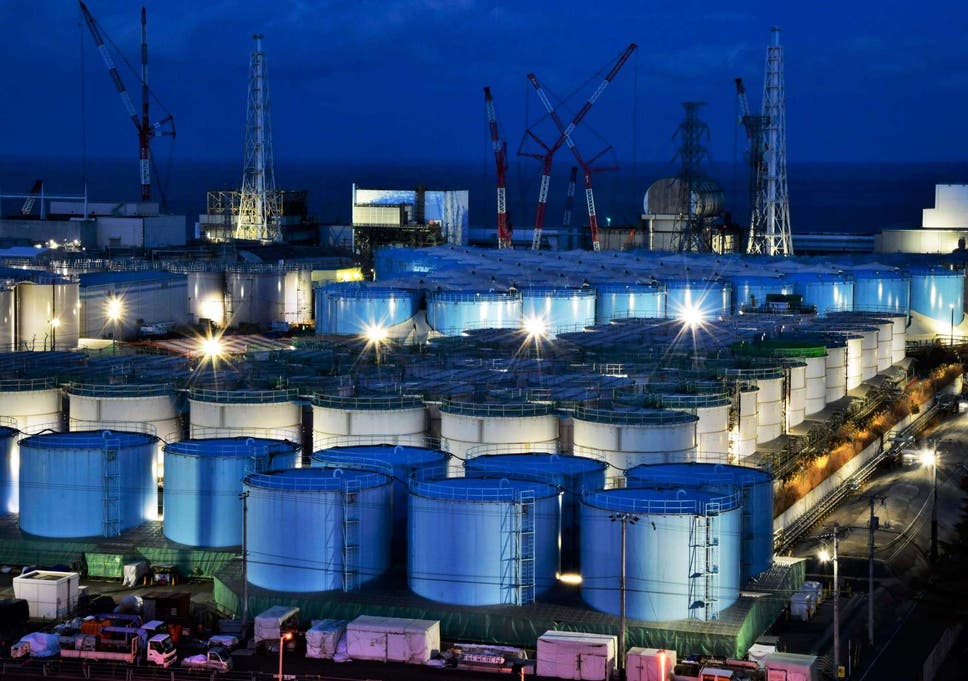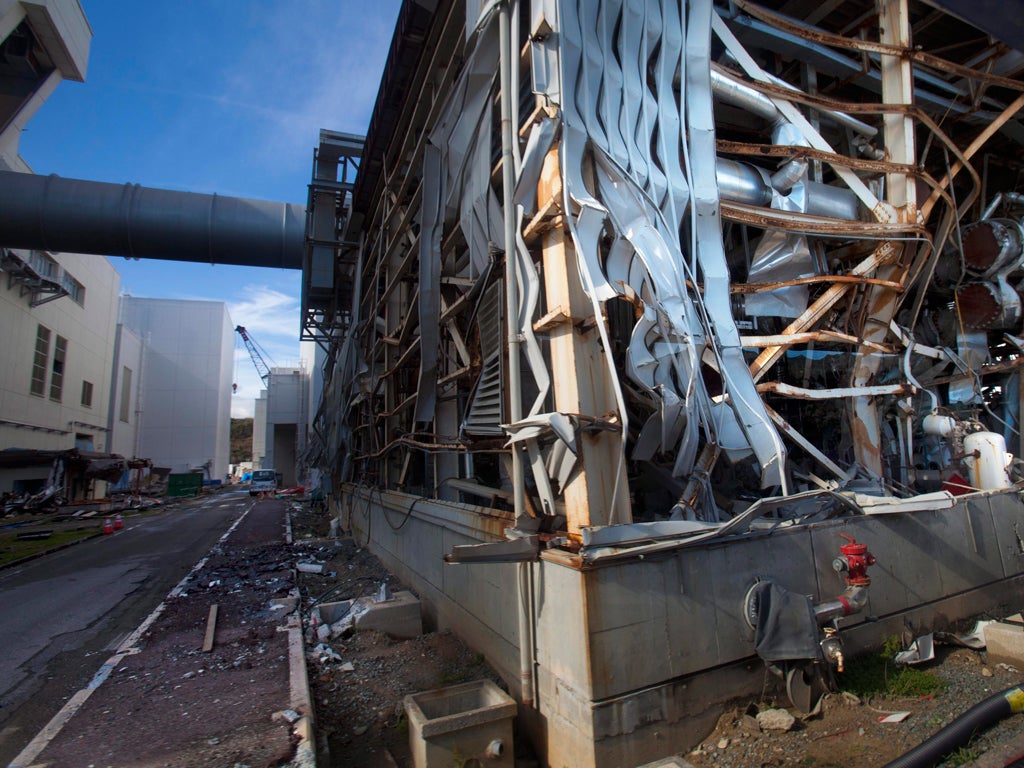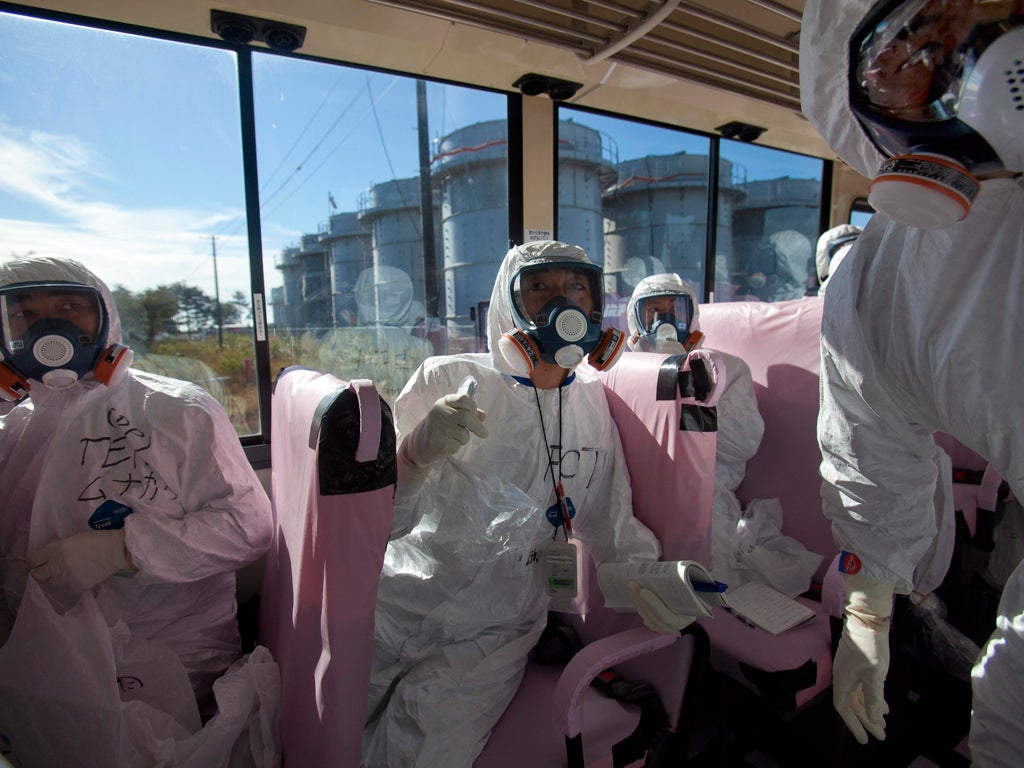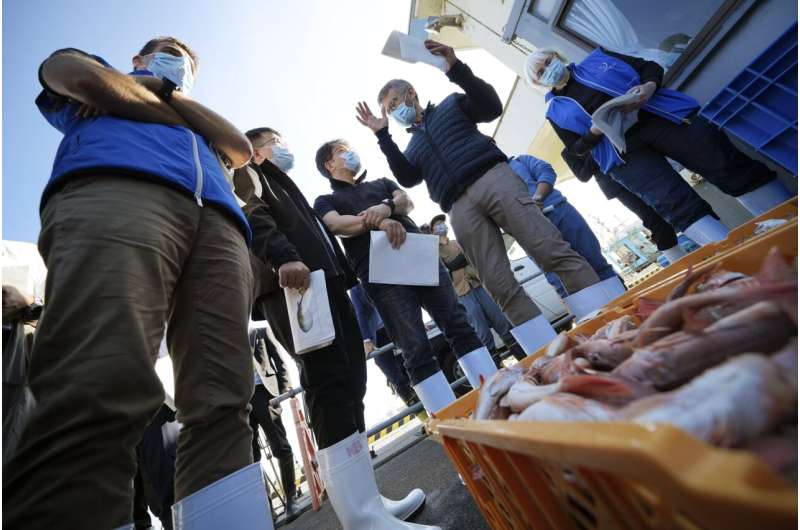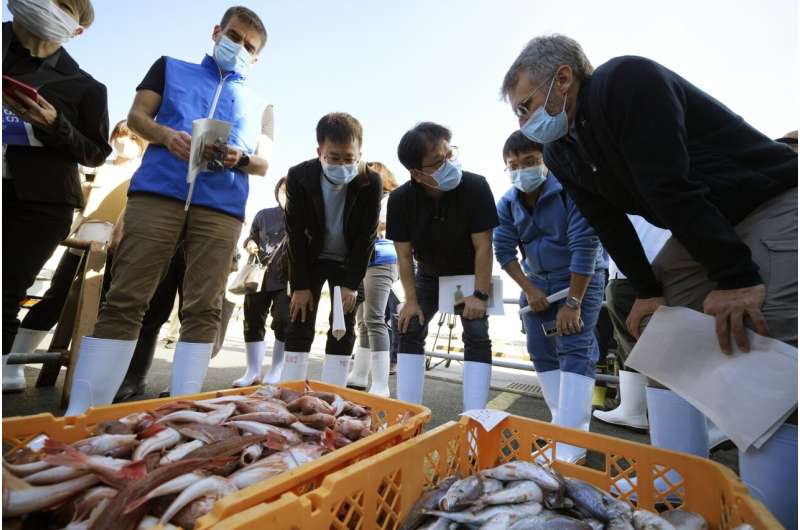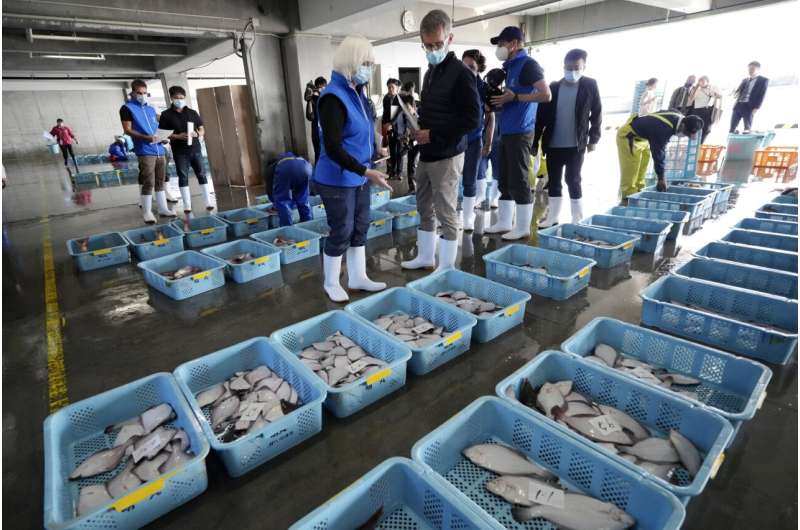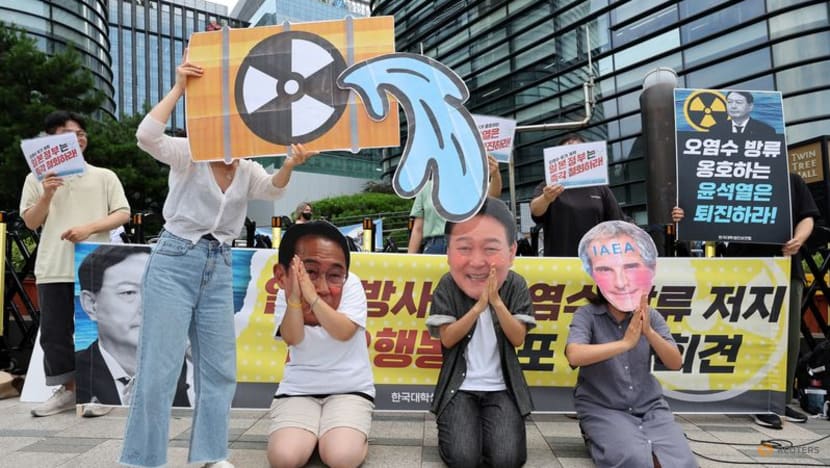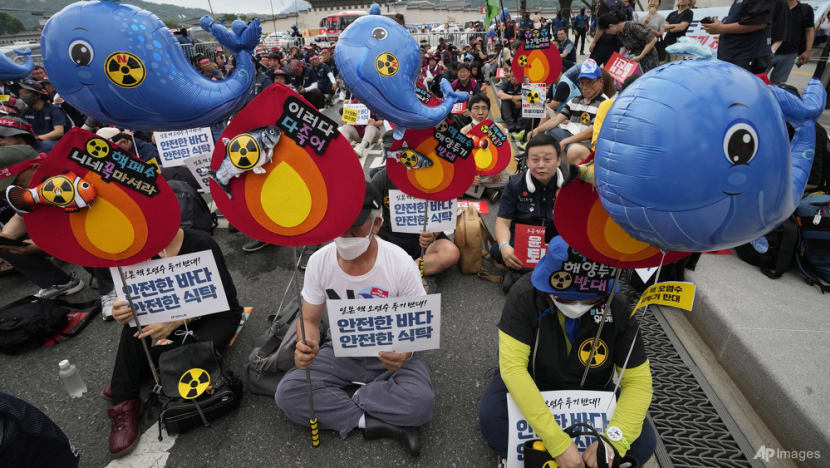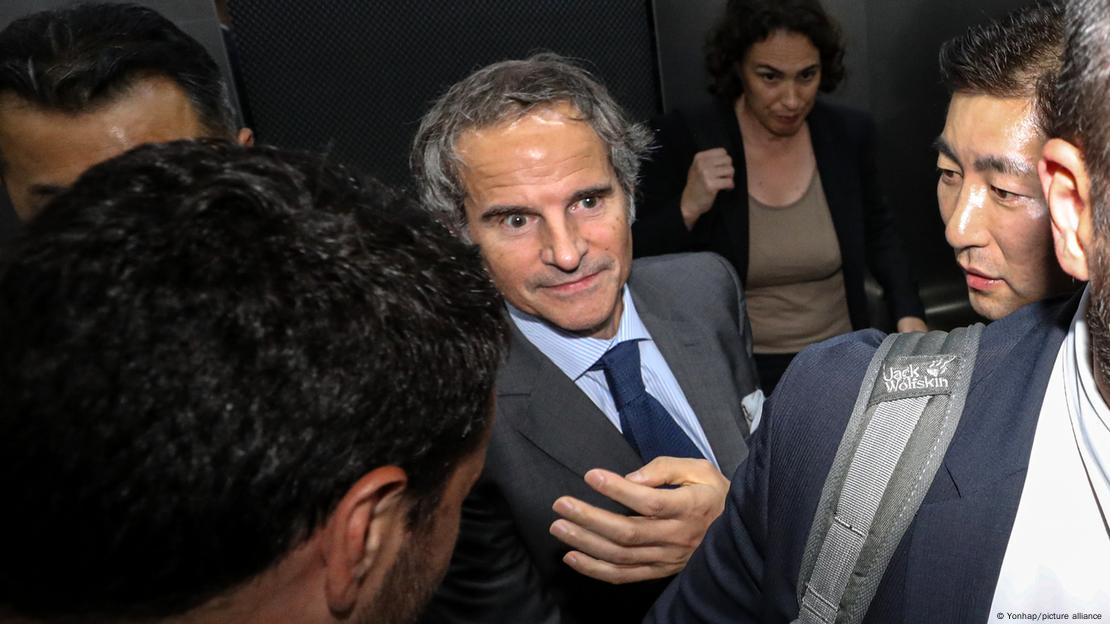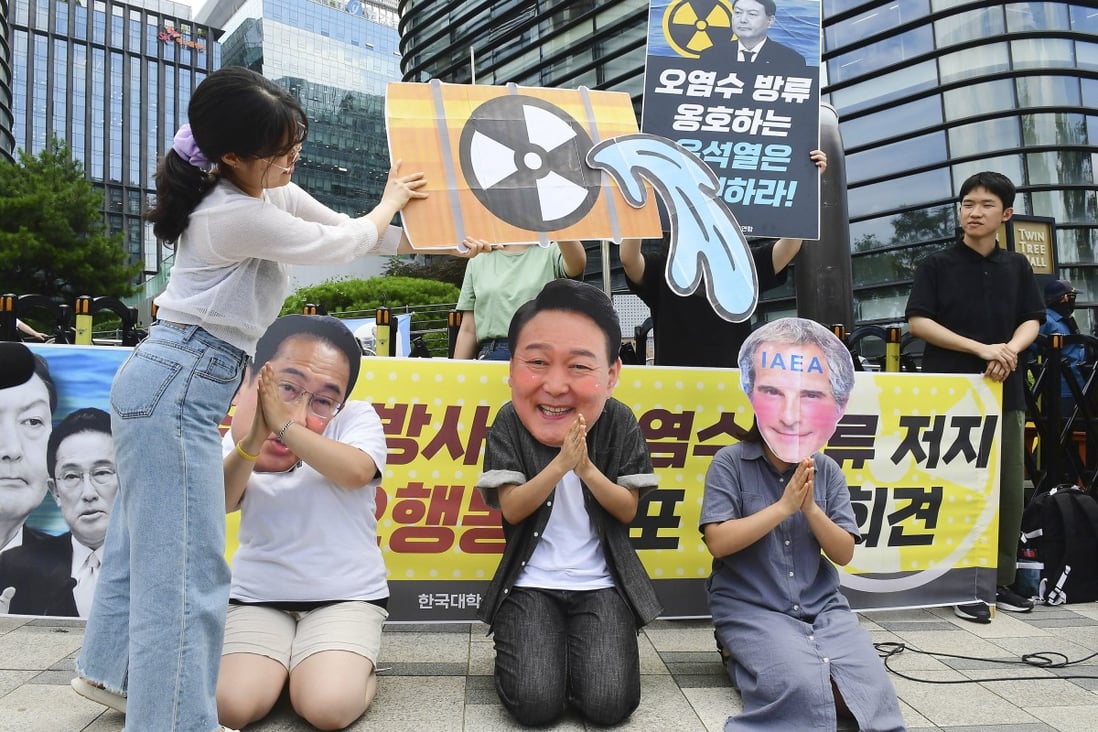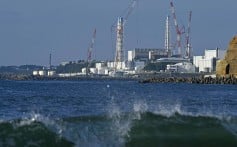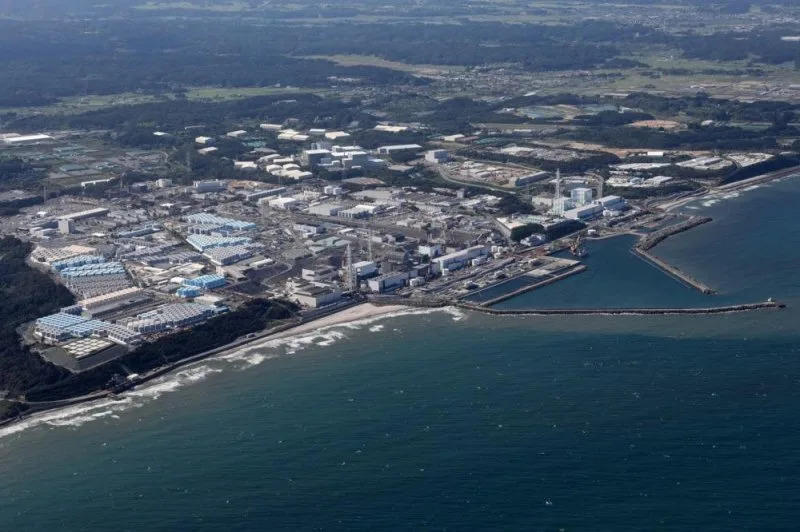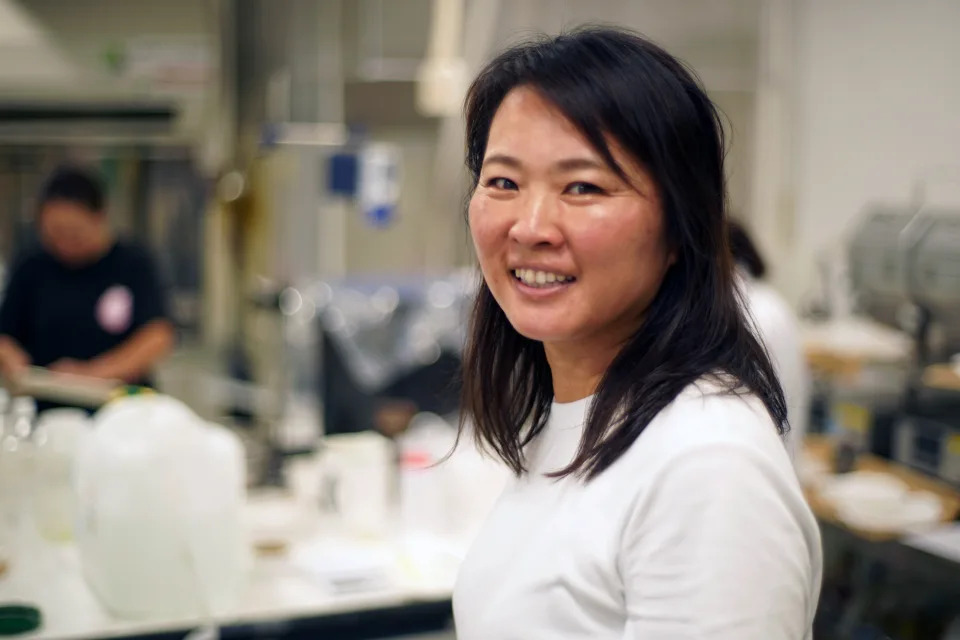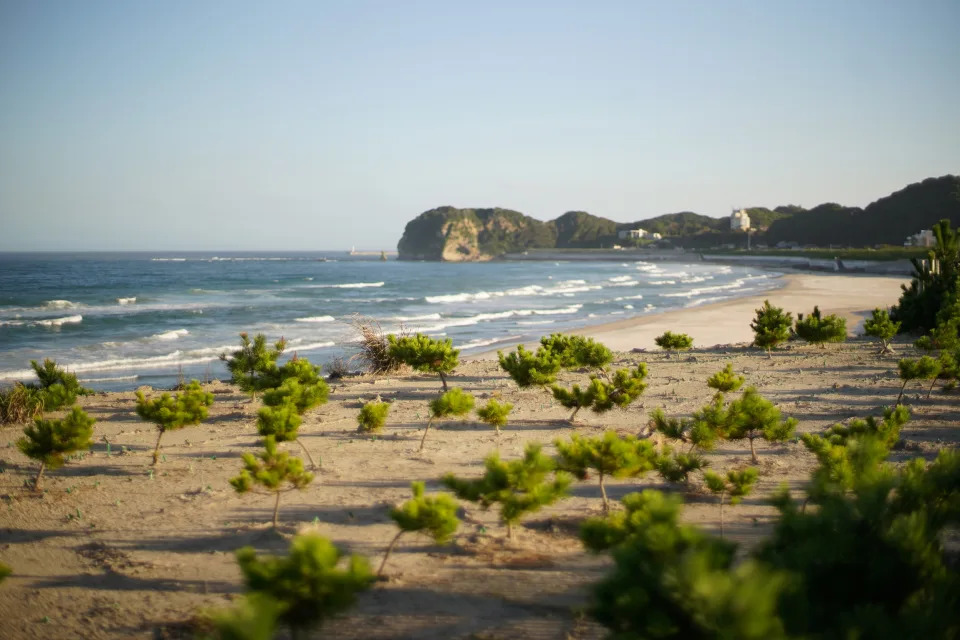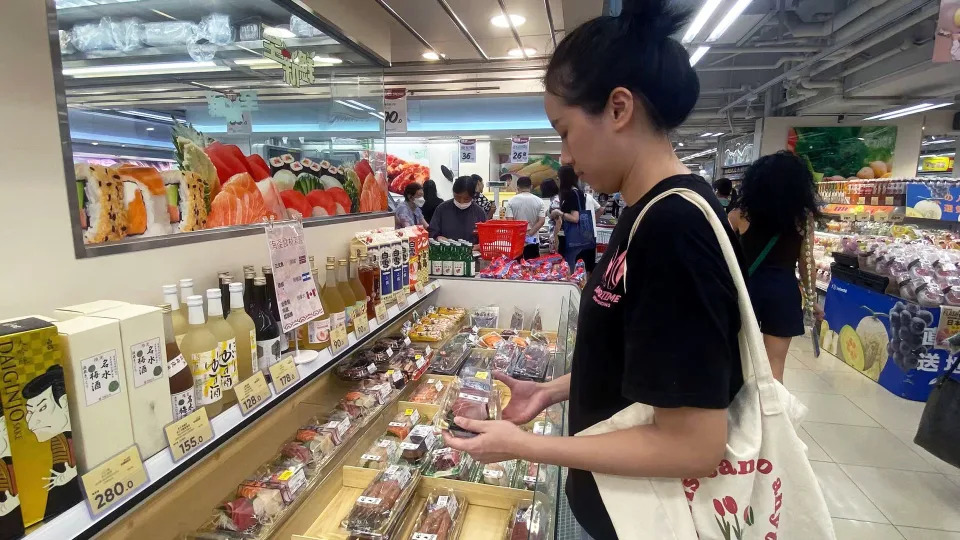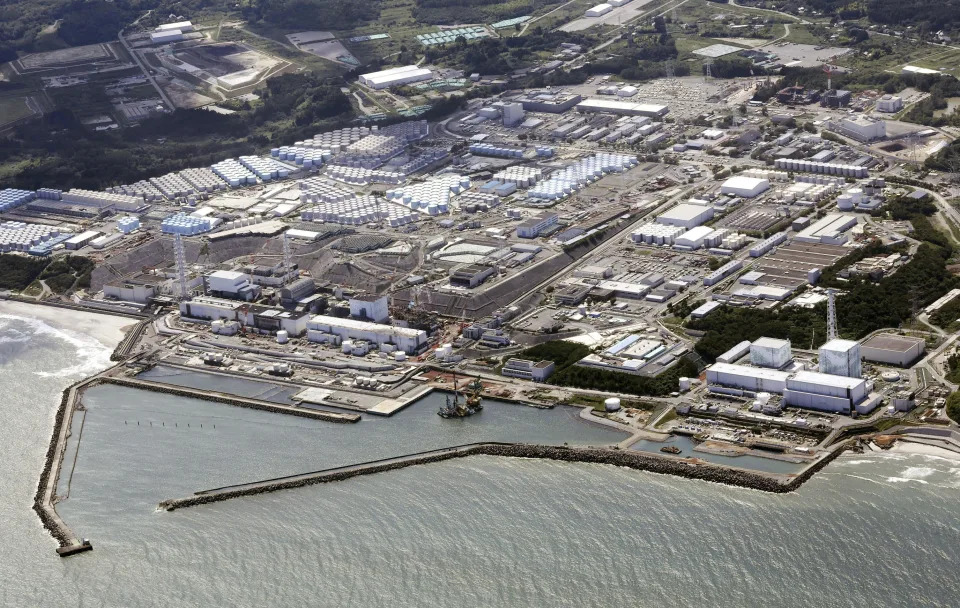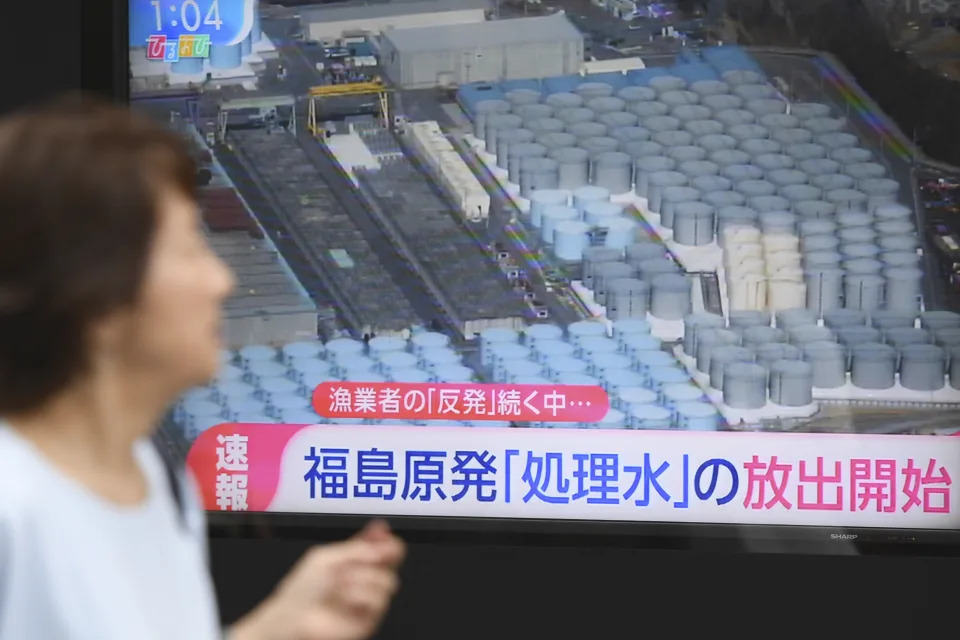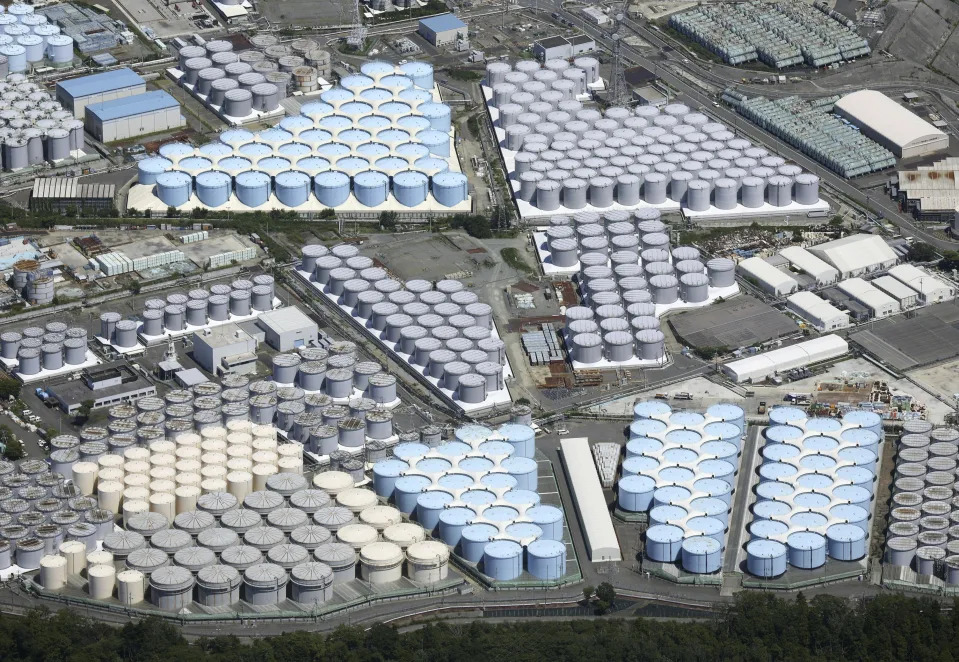Story by Emiko Jozuka • Yesterday - CNN
It is still morning when Kinzaburo Shiga, 77, returns to Onahama port after catching a trawler full of fish off Japan’s eastern coast.
That's because the port is around 40 miles from the Fukushima nuclear plant
CNN goes inside the Fukushima nuclear plant where wastewater is being treatedDuration 3:36 View on Watch
But the third-generation fisherman won’t head straight to market. First, he’ll test his catch for radiation.
It’s a ritual he’s repeated for more than a decade since a devastating earthquake and tsunami triggered a nuclear meltdown at the Fukushima Daiichi power plant in 2011, spewing deadly radioactive particles into the surrounding area.
Radiation from the damaged nuclear plant leaked into the sea, prompting authorities to suspend fishing operations off the coast of three prefectures that had previously provided Japan with half of its catch.
That ban lasted over a year and even after it was lifted, Fukushima-based fishermen like Shiga were for years mostly limited to collecting samples for radioactivity tests on behalf of the state-owned electricity firm Tokyo Electric Power Company, or TEPCO, rather than taking their catches to market.
Ocean currents have since dispersed the contaminated water enough that radioactive Cesium is nearly undetectable in fish from Fukushima prefecture. Japan lifted its last remaining restrictions on fish from the area in 2021, and most countries have eased import restrictions.
Shiga and others in the industry thought they’d put the nightmare of the past years behind them.
So when Japan followed through on plans to gradually release more than 1 million metric tons of filtered wastewater into the Pacific Ocean from the summer of 2023 – an action the government says is necessary to decommission the plant safely – the industry reeled.
The Japanese government and the International Atomic Energy Agency (IAEA), a United Nations body promoting the peaceful use of nuclear energy, say the controlled release, which is expected to take decades, will meet international safety regulations and not harm the environment, as the water will be treated to remove radioactive elements – with the exception of tritium – and diluted more than 100 times.
But with the deadline for the planned water release looming this summer, Fukushima’s fishermen fear that – whether the release is safe or not – the move will undermine consumer confidence in their catches and once again threaten the way of life they have fought so hard to recover.
A year before the 2011 disaster, government data shows Fukushima’s coastal fishing industry landed catches worth around $69 million. By 2018, that figure had dwindled to little more than $17 million. By 2022, while it had recovered somewhat to around $26 million, it was still just a fraction of what it once was.
“I know that the government has decided to go ahead with the policy of releasing treated wastewater into the sea, but for us fishers, it really feels like they made this decision without our full consent,” said Shiga, adding that it made his “blood boil.”
The wastewater dilemma
In 2011, the earthquake and tsunami cut off the power supply to the Fukushima plant, disabling its cooling systems. This caused the reactor cores to overheat and contaminate water within the plant with highly radioactive material.
Since then, new water has been pumped in to cool fuel debris in the reactors. At the same time, ground and rainwater have leaked in, creating more radioactive wastewater that now needs to be stored and treated.
TEPCO has built over 1,000 massive tanks on the site to store what is now 1.32 million metric tons of wastewater – enough to fill more than 500 Olympic pools.
But space is running out and the company says building more tanks isn’t an option. As decommissioning work approaches a critical stage, it says it needs to free up space to store the fuel debris from the stricken plant.
A Trade Ministry official told CNN the government considered five options, including hydrogen release, underground burial and vapor release, which would have seen wastewater boiled and released into the atmosphere, but in April 2021, officials approved the controlled release of the water into the sea. They reasoned that other nuclear facilities around the world had done this and it would be easier to monitor.
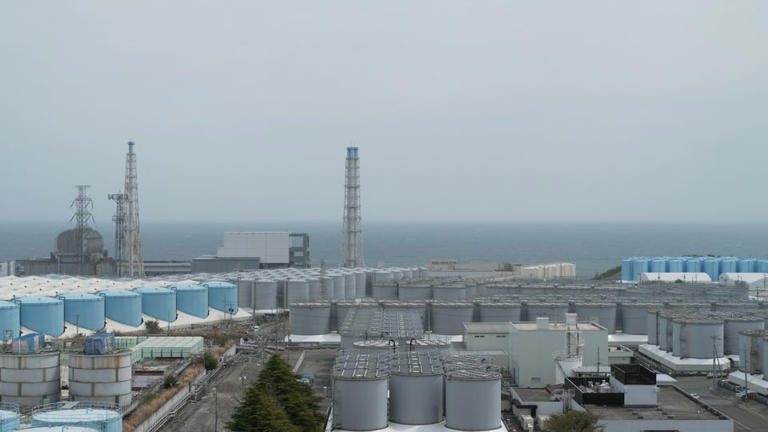
Fukushima’s fishing industry survived a nuclear disaster. 12 years on, it fears Tokyo’s next move may finish it off© Provided by CNNTEPCO has built over 1,000 massive tanks on this site to store what is now 1.32 million metric tons of wastewater, in Okuma of Fukushima prefecture. - Daniel Campisi/CNN
The IAEA told CNN it will also monitor and review the release for as long as necessary, at the request of the Japanese government.
While radioactive wastewater contains dangerous elements including Cesium and Strontium, TEPCO says the majority of those particles can be separated from the water and removed. TEPCO claims its filtering system, called advanced liquid processing (ALPS), can bring down the amount of those elements far below regulatory standards.
But one hydrogen isotope cannot be taken away, as there is currently no technology available to do so. This isotope is radioactive tritium, and the scientific community is divided on the risk its dissemination carries.
How safe is tritium?
TEPCO and the Japanese government say that tritium occurs naturally in the environment. They say that the concentration of tritiated water it plans to discharge would be on par or lower than the amount other countries allow. Since 2021, they’ve been on a mission to promote public awareness about the wastewater and their plans for it, releasing videos and creating a multilingual portal.
The IAEA also says that releasing small amounts of tritium can be safe because it is already present in small quantities in everything from rain and sea water to tap water; small amounts even exist naturally in the human body.
However, experts are divided over the concept of “safe” radiation, with some arguing it is to a large extent a political rather than a scientific concept.

Fukushima’s fishing industry survived a nuclear disaster. 12 years on, it fears Tokyo’s next move may finish it off© Provided by CNNConstruction workers assemble an undersea tunnel through which TEPCO plans to release treated wastewater into the sea, in Okuma of Fukushima prefecture on April 12, 2023. - Daniel Campisi/CNN
“For decades, nuclear power plants worldwide – including in the United States, Canada, Britain, France, China and South Korea – have been releasing waste contaminated with tritium, each under its own national quota,” said Tim Mousseau, an environmental scientist at the University of South Carolina.
But Mousseau argues tritium is overlooked because many countries are invested in nuclear energy, and “there’s no way to produce it without also generating vast amounts of tritium.”
“If people started picking on TEPCO in Fukushima, then the practice of releasing tritium to the environment in all of these other nuclear power plants would need to be examined as well. So, it opens up a can of worms,” he said, adding the biological consequences of exposure to tritium have not been studied sufficiently.
In 2012, a French literature review study said tritium can be toxic to the DNA and reproductive processes of aquatic animals, particularly invertebrates, and the sensitivity of different species to various levels of tritium needs to be further investigated.
TEPCO’s website states that it started assessing the effect of tritium on fish from Fukushima last year. A technical document published by the company in 2022 stated that “fish tritium measurement is very difficult.” It says “there are only a few analysis agencies capable of performing this measurement,” and they do not all produce the same findings.
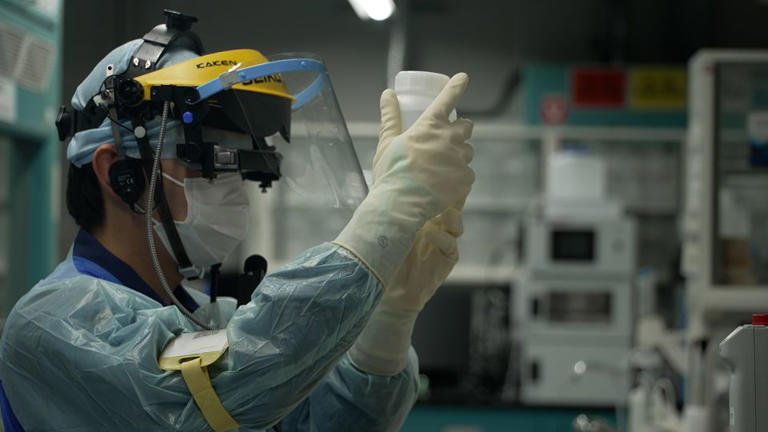
Fukushima’s fishing industry survived a nuclear disaster. 12 years on, it fears Tokyo’s next move may finish it off© Provided by CNNA TEPCO researcher conducts a radiation impact assessment of the ALPS-treated water in a laboratory in Okuma of Fukushima prefecture on April 12, 2023. - Daniel Campisi/CNN
Currently, countries set different standards for the concentration of tritium allowed in drinking water. For example. Australia, which has no nuclear power plants, allows more than 76,000 becquerel per liter, a measure used to gauge radioactivity, while the WHO’s limit is 10,000. Meanwhile, the US and the European Union have much more conservative limits – 740 and 100 becquerel per liter respectively.
Ian Fairlie, an independent consultant on radioactivity in the environment, told CNN that “two wrongs don’t make a right” when it comes to Japan’s decision to release tritiated water. He argues TEPCO should build more storage tanks to allow for the decay of the radioactive tritium, which has a half-life of 12.3 years.
Lack of trust for the ‘nuclear village’
In Japan, the Fukushima wastewater issue has become highly contentious due to a lack of trust among influential advocates of nuclear energy, or what’s locally known as the “nuclear village.”
The informal group includes members of Japan’s ruling party (the Liberal Democratic Party), the Ministry of Economy Trade and Industry and the nuclear industry.
“(The nuclear village) used to tell us that nuclear energy is 100% safe – but it wasn’t, as the Fukushima Daiichi plant accident revealed,” said Koichi Nakano, a political scientist at Sophia University, in Tokyo.
A series of missteps after the disaster further eroded public trust, according to a 2016 report written by Kohta Juraku, a researcher at Tokyo Denki University.
For instance, in 2012, the government and TEPCO presented a proposed action plan to local fishing representatives that involved pumping up groundwater before it flooded into the nuclear reactor buildings and releasing it into the sea. Fishing bodies were on board but the plan was it postponed until 2014 after 300 tons of radioactive water leaked from the plant into the sea, infuriating fishers.
Standing between the towering wastewater tanks, Kenichi Takahara, a risk communicator at TEPCO told CNN that the company is aware that people in Japan and overseas are skeptical of the company’s assurances.
“While TEPCO has been promoting nuclear safety in the first place, the nuclear accident happened in 2011. So, we understand that there are many people who can’t trust us,” said the TEPCO official.
“We are hoping that if the IAEA and other organizations can show them that there is no problem, people will understand us,” Takahara added.
The problem of changing mindsets
Japanese officials told CNN that they have taken the voices of locals in Fukushima into consideration and will send a message to other nations and consumers around the world that the treated water is safe to release.
Tokyo has also created a fund of 30 billion yen ($225 million) to buy and store freezable seafood if consumer confidence takes a hit following the release, an official from the Ministry of Economy, Trade and Industry told CNN.
And in an effort to convince both fishermen and consumers that the water to be released is safe, in March 2022 TEPCO started conducting tests on the tritium concentrations in fish, shellfish and seaweed reared in regular seawater as compared to those raised in ALPS-treated water.

Fukushima’s fishing industry survived a nuclear disaster. 12 years on, it fears Tokyo’s next move may finish it off© Provided by CNNA TEPCO researcher feeds flounder that are being raised on site in both seawater and ALPS treated water that has been diluted with seawater, in Okuma of Fukushima prefecture on April 12, 2023. - Daniel Campisi/CNN
But Satsuki Takahashi, an anthropologist specializing in sustainability studies at Hosei University, warned that changing mindsets is no easy feat.
“From the consumer’s perspective, whether it’s processed or not, this is wastewater. It’s hard for (people) to grasp what safety means or what risks mean,” she said.
“One of the biggest issues in terms of this wastewater, for those who used to purchase the fish from Fukushima before the disaster, is whether they are going to come back and buy the fish once the label states its provenance.”
For fishers like Shiga, the work to restore their way of life is far from over.
“We’re taking the initiative and appealing to consumers so they understand (our products are safe), but we have a hard time reaching them,” said Shiga, who fears that countries may reimpose bans on imports of Fukushima fish following the wastewater release.
“If the government releases the water into the sea off Fukushima now, everything we’ve done so far and our current efforts will be wasted,” he said.
CNN’s Moeri Karasawa, Carlotta Dotto, Natalie Leung, Henrik Pettersson, Will Mullery and Alberto Mier contributed from Tokyo, Hong Kong, London, Atlanta and Berkeley.
CNN.com
